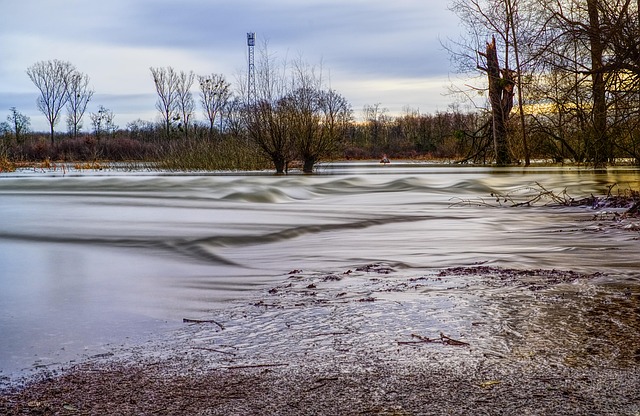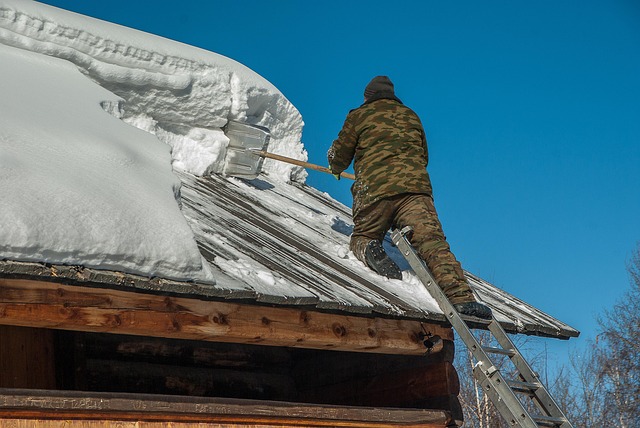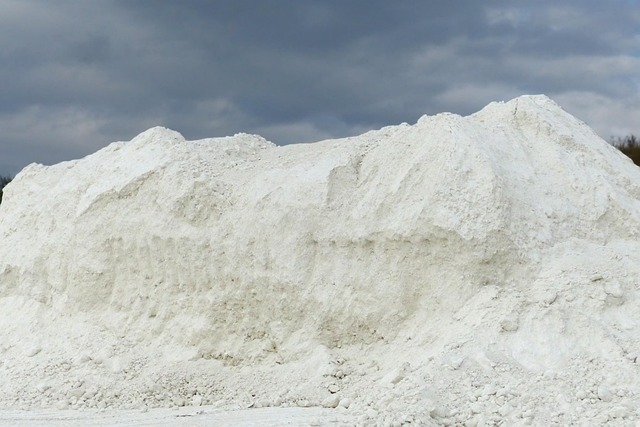Category: Flooded Carpet Water Removal McKinney TX
Flooded Carpet Water Removal McKinney TX: A Comprehensive Guide
Introduction
In the bustling city of McKinney, Texas, a specialized service has emerged to tackle a unique challenge—the removal of water from flooded carpets. This process, known as flood carpet water removal, is a critical component of disaster recovery and home maintenance in areas prone to flooding. McKinney TX, with its vibrant community and occasional weather-related events, has witnessed the importance of efficient and effective water extraction methods for carpets. This article aims to provide an in-depth exploration of this vital service, covering various aspects from its technical intricacies to global implications and future prospects. By delving into these topics, we hope to shed light on the significance of flood carpet water removal in preserving homes, businesses, and the environment.
Understanding Flooded Carpet Water Removal McKinney TX
Definition and Core Components
Flooded carpet water removal is a specialized service that involves the complete extraction of standing water from carpets and floor coverings after a flooding event. This process is crucial for not only salvaging valuable flooring but also preventing mold growth, structural damage, and health hazards associated with stagnant water. In McKinney TX, where occasional floods can disrupt households and businesses, professional carpet water removal has become an indispensable service.
The core components of this process include:
- Water Extraction: The primary step involves using powerful machines like extractors or vacuums to remove the initial standing water from the carpet fibers.
- Drying Techniques: After extraction, advanced drying methods such as air movers and dehumidifiers are employed to expedite the evaporation of remaining moisture.
- Carpet Cleaning: Post-drying, a thorough cleaning is essential to eliminate any residual dirt, mold spores, or bacteria that may have been present in the water.
- Disinfection: In some cases, especially after severe floods, disinfection steps are taken to kill any germs or pathogens that could pose health risks.
Historical Context and Significance
The concept of flood carpet water removal has evolved over time as flooding events became more frequent and severe worldwide. Historically, traditional methods involved manual labor, such as bucket-by-bucket water removal, which was time-consuming and often ineffective in removing deep water. The introduction of specialized equipment and techniques during the 20th century revolutionized the industry.
In McKinney TX, where floods have been a recurring issue, the need for efficient water removal became apparent. Over the years, local businesses and emergency services have adapted and refined their strategies to handle these events more effectively. Today, flood carpet water removal is not just a service but a vital component of community resilience and disaster preparedness.
Global Impact and Trends
International Influence
The impact of flooded carpet water removal extends far beyond McKinney TX, as flooding is a global concern affecting millions worldwide. Many countries have adopted similar strategies and technologies to address this challenge, leading to international collaboration and knowledge sharing. For instance, advanced drying techniques developed in North America have been implemented in Europe and Asia to enhance carpet preservation after floods.
Regional Variations and Trends
The approach to flood carpet water removal varies across regions due to differing climates, building codes, and cultural practices:
- North America: Known for its sophisticated disaster response systems, North American cities like McKinney have well-established protocols for water removal. The use of modern equipment and trained professionals is common.
- Europe: European countries often face unique challenges, such as historic city centers with intricate flooring. They emphasize precise, non-invasive drying methods to preserve these valuable assets.
- Asia: Rapid urbanization in Asia presents both opportunities and challenges. Cities like Tokyo have implemented innovative solutions, including quick-drying carpet materials and efficient extraction systems.
Data and Statistics
A 2022 report by the International Flood Management Institute highlights some key global trends:
- Increasing Extreme Weather Events: The frequency and intensity of floods are rising globally, primarily due to climate change. This trend underscores the growing demand for effective water removal services.
- Adoption of Technology: There is a noticeable shift towards using advanced technology, such as smart sensors and data analytics, to predict and respond to flooding more efficiently.
- Community Resilience: Many regions are focusing on building community resilience by educating residents about flood preparedness and providing access to specialized water removal services.
Economic Considerations
Market Dynamics
The global flood carpet water removal market is a significant segment of the broader disaster recovery industry. According to a 2023 report by Market Research Future (MRFR), this market is projected to grow at a CAGR of 5.6% from 2022 to 2029. McKinney TX’s local market mirrors these trends, with an increasing demand for professional water removal services after flood events.
Investment and Business Opportunities
The economic impact of this industry extends beyond direct service provision:
- Equipment Suppliers: Companies specializing in carpet extraction machinery and drying equipment benefit from the growing market.
- Restoration Services: Businesses offering comprehensive property restoration, including water removal, cleaning, and repair, see a steady stream of customers post-floods.
- Insurance Sector: Insurance companies often cover water damage, leading to increased claims processing and opportunities for specialized service providers.
Cost Analysis
The cost of flood carpet water removal varies based on several factors:
- Scope of Damage: Smaller, localized flooding events may require less extensive work, while major disasters can lead to substantial costs.
- Equipment Usage: The rental or purchase of specialized equipment influences pricing. Companies often charge per square foot or as a flat rate for the service.
- Labor Costs: Skilled technicians and restoration teams contribute significantly to overall expenses.
Technological Advancements
Innovations in Equipment
Technological advancements have played a pivotal role in enhancing flood carpet water removal efficiency:
- Advanced Extractors: Modern extractors are more powerful, efficient, and capable of handling larger areas quickly. They often feature variable suction control and advanced filtration systems.
- Air Movers and Dehumidifiers: These tools speed up drying processes by circulating warm air and removing moisture from the environment. New models offer precise temperature controls and quiet operation.
- Smart Sensors: Integrating smart sensors into water removal equipment allows for real-time data collection, such as moisture levels, which aids in informed decision-making.
Data Analytics and Predictive Modeling
The marriage of technology and data analytics has brought about significant changes:
- Predictive Modeling: Using historical flood data and weather patterns, predictive models can forecast areas prone to flooding, enabling proactive measures.
- Remote Monitoring: Sensors and drones can monitor water levels and environmental conditions remotely, providing early warnings for potential floods.
- Efficiency Improvement: Data analytics helps optimize drying processes by identifying hot spots and areas requiring additional attention.
Future Potential
The future of flood carpet water removal technology looks promising:
- Internet of Things (IoT) Integration: IoT devices will further enhance remote monitoring and control, allowing for more efficient disaster response.
- Autonomous Drying Systems: Research is underway to develop self-operating drying equipment that can adapt to changing conditions automatically.
- Sustainable Solutions: There is a growing focus on eco-friendly technologies, such as biodegradable materials for absorbents and energy-efficient equipment.
Policy and Regulation
Governance and Legal Frameworks
The regulation of flood carpet water removal services varies across jurisdictions:
- Local Authorities: In the United States, including McKinney TX, local governments often have specific guidelines and permits for disaster restoration services. These regulations ensure safety and service quality.
- National Standards: Organizations like the Institute of Inspection, Cleaning, and Restoration Certification (IICRC) set industry standards for water damage restoration, including carpet water removal.
- International Agreements: In some cases, international collaborations lead to agreements on environmental protection and disaster response, influencing local policies.
Impact on Service Delivery
Policies and regulations have a direct impact on the following aspects:
- Licensing and Certification: Service providers must obtain licenses and certifications, ensuring they meet specific training and equipment requirements.
- Safety Standards: Regulations dictate safe handling of hazardous materials, use of personal protective equipment (PPE), and proper disposal of waste.
- Insurance Requirements: Businesses often need liability insurance to cover potential risks during water removal operations.
Regulatory Challenges and Adaptations
Implementing and adhering to regulations present challenges:
- Rapid Response Times: During emergencies, quick response times are crucial. Some regulations may need adjustments to balance safety with speed of service.
- Standardization: Ensuring consistent quality across different service providers is a challenge. Standardized training programs can help address this.
- Environmental Concerns: Regulations related to disposal of water and waste must be followed strictly to protect local ecosystems.
Challenges and Criticisms
Common Obstacles
Despite its importance, flood carpet water removal faces several challenges:
- Accessibility: In heavily flooded areas, accessing properties and navigating through debris can hinder quick response times.
- Variable Weather Conditions: Changing weather patterns make it difficult to predict and prepare for flooding events accurately.
- Cost and Insurance Coverage: The high costs associated with water removal may not be covered by standard home insurance policies, creating financial barriers for homeowners.
Criticisms and Solutions
Criticisms of the current practices include:
- Lack of Public Awareness: Many residents are unaware of the importance of quick action and proper drying after flooding. Public education campaigns can address this.
- Inconsistent Quality: The lack of standardized training and certification programs may lead to variable service quality. Implementing industry-wide standards can ensure consistency.
- Environmental Impact: Traditional methods often involve using chemicals for water treatment, which can have environmental consequences. Adopting eco-friendly practices is essential.
Strategies for Overcoming Challenges
Proposed solutions include:
- Community Preparedness Programs: Educating residents on flood preparedness and providing resources for water removal can empower them to take immediate action.
- Industry Standardization: Establishing uniform training and certification programs will ensure qualified technicians deliver consistent service quality.
- Sustainable Practices: Promoting the use of biodegradable materials, eco-friendly equipment, and natural cleaning methods can minimize environmental impacts.
Case Studies
Case Study 1: Hurricane Harvey Recovery (Houston, TX)
In 2017, Houston faced one of the costliest hurricanes in US history, with extensive flooding affecting hundreds of thousands of residents. Local carpet water removal companies played a crucial role in the recovery effort:
- Rapid Deployment: Within hours of the storm’s landfall, specialized teams were on the ground, assessing damaged properties and beginning extraction processes.
- Community Collaboration: Local businesses partnered with emergency services to prioritize vulnerable areas and ensure fair access to services.
- Long-Term Support: Despite initial challenges, these companies provided ongoing support for months, offering cleaning, repair, and restoration services to help residents rebuild.
Case Study 2: The Tokyo Floods (Japan)
In 2019, severe rainfall caused widespread flooding in Tokyo, leading to a unique challenge for carpet water removal specialists:
- Historical Preservation: Tokyo’s ancient city center boasts intricate wooden flooring that required meticulous care during the extraction process.
- Advanced Technology: Japanese companies utilized state-of-the-art equipment, including precise moisture sensors and low-moisture carpet drying techniques, to preserve these historical treasures.
- Community Engagement: Local residents actively participated in the cleanup efforts, demonstrating a strong sense of community resilience and cooperation.
Case Study 3: The 2021 Germany Floods (Cologne)
The 2021 European floods affected many cities, with Cologne, Germany, suffering significant damage. This case highlights international collaboration and innovative solutions:
- Cross-Border Support: Companies from neighboring countries offered their expertise and resources to assist in the recovery efforts.
- Smart City Technology: Cologne utilized its smart city infrastructure, including sensors and real-time data, to coordinate water removal operations efficiently.
- Temporary Solutions: In areas with ongoing construction, temporary flooring options were implemented to provide immediate relief while waiting for permanent repairs.
Future Prospects
Growth Areas
The future of flood carpet water removal is poised for growth in several sectors:
- Urbanization and High-Rise Buildings: The increasing trend of urbanization leads to more high-rise buildings, which require specialized water removal techniques for larger, complex spaces.
- Eco-Friendly Practices: There will be a growing demand for sustainable solutions, driving innovation in biodegradable materials and energy-efficient equipment.
- Remote Monitoring and Predictive Analytics: As technology advances, remote monitoring and predictive modeling will play a more significant role in disaster response.
Emerging Trends
Several emerging trends shape the industry’s future:
- Drones and Remote Sensing: Drones equipped with cameras and sensors can assess flooding from above, providing valuable data for emergency services.
- Artificial Intelligence (AI): AI-driven systems can analyze historical data to predict flood patterns and optimize resource allocation.
- Digital Twin Technology: Creating digital replicas of buildings and infrastructure allows for better understanding and preparation for potential floods.
Strategic Considerations
To capitalize on future prospects, businesses and policymakers should:
- Invest in Research and Development: Continued innovation in technology and practices will be crucial for staying ahead of the curve.
- Foster International Collaboration: Sharing knowledge and resources across borders can enhance global disaster response capabilities.
- Embrace Digital Transformation: Integrating digital tools and platforms can improve communication, service coordination, and data analysis.
Conclusion
Flooded carpet water removal McKinney TX is a critical service that intersects various disciplines, from engineering to emergency management. This article has explored its historical context, global impact, economic implications, technological advancements, policy frameworks, challenges, and future prospects. As the world grapples with increasingly frequent and severe flooding events, the importance of efficient water removal becomes ever more evident.
By delving into these aspects, we have highlighted the multifaceted nature of this industry and its potential for growth and positive impact. As technology continues to evolve and global cooperation strengthens, flood carpet water removal is poised to play an even more vital role in preserving homes, businesses, and communities worldwide. The future looks promising, with opportunities for innovation, sustainability, and enhanced disaster preparedness.
Jaki drapling, belling. **Drilando, drajmy. **Nerd, drając. #,,

JABiki provides 24/7 flooded carpet water removal in McKinney, TX, employing advanced equipment and…….
Hire Experts for Flooded Carpet Water Removal McKinney TX

In McKinney, TX, swift action is vital for flooded carpet water removal to prevent mold and damage……..
Flooded Carpet Cleanup: McKinney TX Water Removal Solutions

Immediate action is critical after flooding in McKinney, TX for health and property preservation. Ef…….
Flooded Carpet Restoration: McKinney TX Water Removal Guide

After a flood, quick action is crucial to save McKinney TX carpets. Water removal experts use advanc…….
Flooded Carpet? Trust Water Removal Experts in McKinney TX

After a flood in McKinney, TX, swift action is crucial. Focus on flooded carpet water removal to pre…….
Flooded Carpet Water Removal McKinney TX: Expert Guide to Recovery

After a flood, quick action is crucial for damaged carpets and structures in McKinney TX. Turn off p…….
Flooded Carpet Water Removal McKinney TX: Expert Help

In cases of flooded carpets in McKinney, TX, quick action is crucial. Renting powerful dehumidifiers…….
McKinney TX Flooded Carpet Water Removal & Sewage Cleanup

Sewage backups in McKinney, TX homes due to clogs, old plumbing, rain, and tree roots cause flooding…….
Urgent Flooded Carpet Water Removal McKinney TX Service

In McKinney, TX, swift action against flooded carpets is key to minimizing damage. Water Mitigation…….
